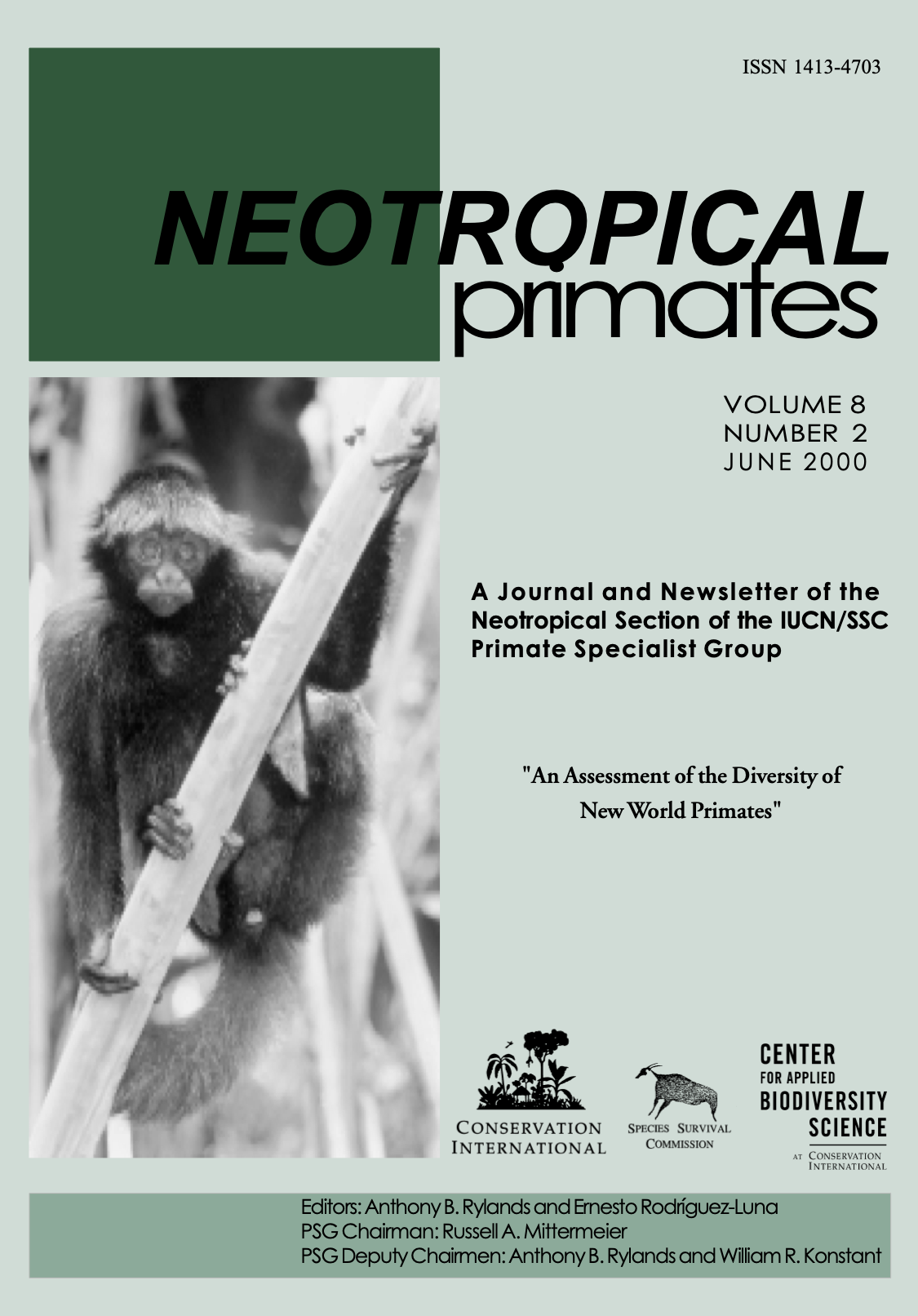An assessment of the diversity of New World primates
DOI:
https://doi.org/10.62015/np.2000.v8.453Keywords:
Primates, taxonomy, PlatyrrhiniAbstract
An understanding of the full diversity of the primates is vital for priority-setting for conservation purposes, both for captive breeding and in situ conservation measures. Here we provide a full, annotated listing of the Neotropical primate species and subspecies resulting from a workshop, “Primate Taxonomy for the New Millennium”, which brought together experts in primate taxonomy and biogeography, morphologists and geneticists. It was organized by the IUCN/SSC Primate Specialist Group (PSG) and held at the Disney Institute, Orlando, Florida, in February 2000. The list separates the Platyrrhini into five families (Callitrichidae, Cebidae, Aotidae, Pitheciidae and Atelidae), 18 genera (Cebuella, Mico, Callithrix, Saguinus, Leontopithecus, Callimico, Saimiri, Cebus, Aotus, Callicebus, Pithecia, Chiropotes, Cacajao, Alouatta, Ateles, Lagothrix, Oreonax and Brachyteles), 110 species, and 205 species and subspecies.

Downloads
Published
Issue
Section
License

This work is licensed under a Creative Commons Attribution-NonCommercial-ShareAlike 4.0 International License.


